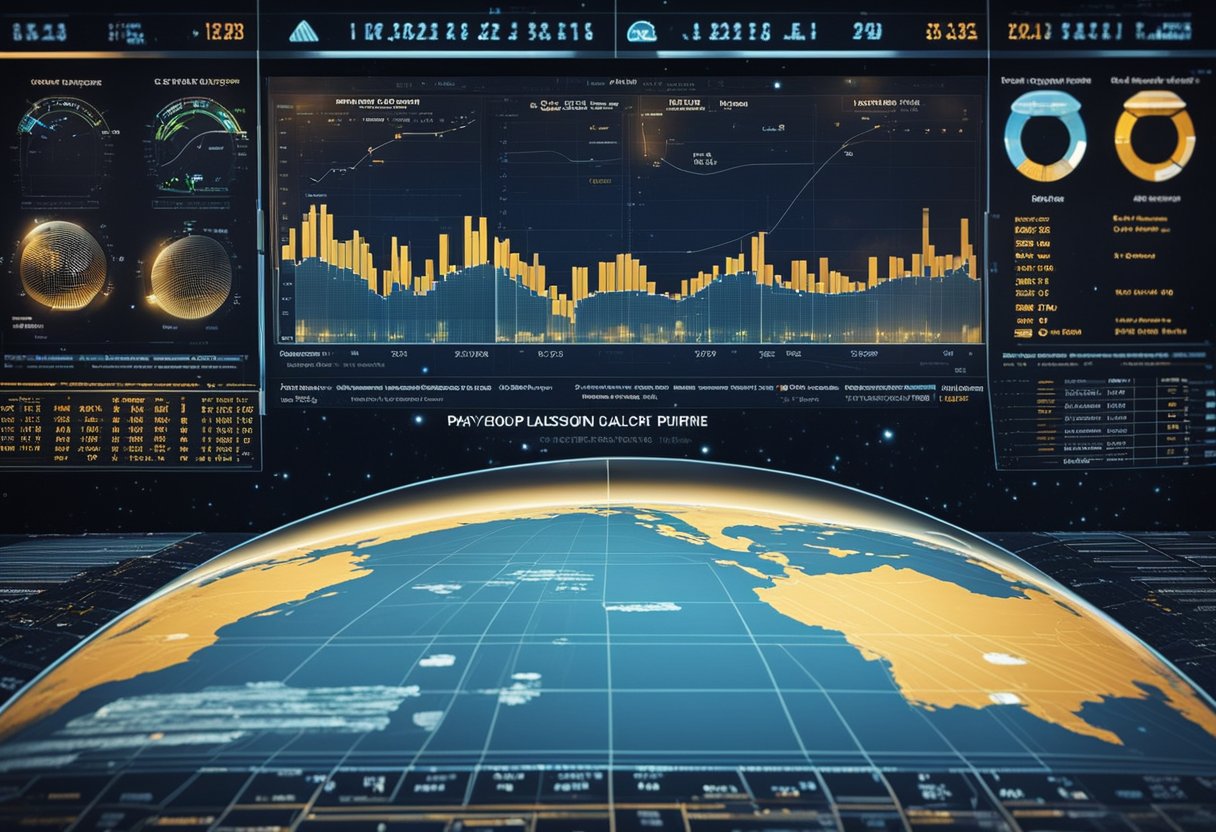
Space mission planning is a critical discipline that involves careful preparation and advanced software to address various objectives, ranging from satellite deployment to deep space exploration. At the heart of these undertakings is mission planning software. This sophisticated software encompasses a suite of tools that facilitates everything from initial design to the successful completion of a space mission. With the complexity of space travel and the increasing interest in both governmental and commercial ventures, the tools developed for mission planning have become integral for ensuring missions meet their scientific, commercial, or exploratory objectives.

As space exploration evolves, mission planning software has expanded in functionality. It now integrates advanced simulations, data management systems, and supports a wide array of mission types, from manned spaceflights to unmanned probes sent to distant celestial bodies. Effectively allocating resources, managing communication and navigation, and planning payload deployment are among the critical tasks these tools manage. Importantly, these software systems are instrumental in helping teams across the globe collaborate in real-time, sharing insights and data to drive missions forward.

In this section, we uncover the pivotal aspects of space mission planning, focusing on the mission’s context, its core objectives, and the indispensable role of planning software.
The genesis of any space mission hinges on comprehensively grasping the mission context. This involves analysing parameters such as the intended orbit, the spacecraft’s role, whether it pertains to communication, earth observation, or space tourism as envisioned in sites like SpaceVoyageVentures.com, and the specific challenges inherent to the mission’s environment. Recognising these aspects guides the subsequent design and planning phases to align with the mission’s unique framework.
Defining clear objectives and goals emerges as a crucial step. This task dictates mission success and encompasses:
These goals must reflect the practicalities of the mission and the capabilities of the spacecraft while resonating with the overall intent, whether scientific discovery or commercial ventures.
Mission planning software serves as the beating heart of the entire operation, marrying the objectives with real-world execution. Notable tools, like the L3Harris Mission Planning Tool, provide an integrated suite to streamline activities from conceptual design to mission completion. Such software frameworks feature:
Through these advanced technological instruments, we can chart the journey of spacecraft, optimising each phase to reflect our strategic vision and mission objectives effectively.
In our modern era of space exploration, software systems are integral to mission success. They offer the robustness and agility needed to navigate the complex variables of space missions.
The architecture of a software framework is pivotal in defining its effectiveness. We look for modular designs that can adapt to various mission scenarios, such as the one offered by the Mission Planning Tool by L3Harris. This kind of software provides a foundation upon which space mission planning can be executed, encompassing simulations, event management, and real-time tracking.
Efficient space mission design tools must be scalable to support missions of different sizes and complexities. For instance, a framework like NASA’s software tools for small spacecraft missions assures optimal performance even as the mission scope expands. We ensure that our systems are capable of scaling without compromising on performance to accommodate evolving mission requirements.
Integration is a cornerstone in our software evaluation. A tool such as the SpaceCraft Orbit and groundTrack Analysis tool (SCOTA) from DLR exemplifies how new software can align with existing orbit propagator models. Our goal is to facilitate ease of integration to meld seamlessly with established systems, thereby enhancing workflow continuity.
In each of our chosen frameworks, we uphold a steadfast commitment to embodying a balance between innovation and reliability, ensuring that the architecture not only promises future growth but also solidifies current mission objectives. Whether our software is used to plan missions here on Earth or in the realm of space tourism as presented by SpaceVoyageVentures.com, we stand by our resolve to deliver excellence.

In the realm of space missions, we recognise that having robust design and simulation tools is critical. These tools form the backbone of both training and the early development phases, guiding us from the conceptual design to the eventual mission execution.
Simulation software is indispensable when it comes to preparing astronauts and mission control teams for the realities of space. These tools provide a virtual environment that mimics the complexities of space missions, allowing teams to practice scenarios and hone their skills without the associated risks of real-life training. For example, NASA’s software tools are pivotal in developing small spacecraft missions, offering a suite of publicly available tools from both NASA and the Open Source community.
In the quest to refine spacecraft design, optimization and prototyping software play a crucial role. We use these tools to test and enhance various aspects of our spacecraft, ensuring that each component operates at its highest potential. Incorporating Python scripting within these frameworks has been particularly effective, as seen in FreeFlyer’s astrodynamics software, which stands out by offering a flexible language for tackling a wide array of astrodynamics challenges.
Finally, the design phase is where we test our prototypes, iteratively improving them to meet the stringent requirements of space travel. By optimising our designs, we advance closer to the goal of not only conducting scientific missions but also supporting entities like SpaceVoyageVentures.com in their endeavour to open the skies to space tourism.
In managing space missions, efficiency and precision in mission planning operations are crucial. These operations encompass the full lifecycle of a mission, from initial design through execution and analysis.
We meticulously devise a strategy that encompasses every aspect of the mission’s lifecycle. This involves comprehensive mission operations planning which is essential for determining the resources and timelines required. Scheduling is done with software like Horizon™ and Compass™ Satellite Software from Lockheed Martin, which has been integral in over 50 space missions. The precision of our pre-mission scheduling ensures that no detail is overlooked.
During the mission, we ensure operations control is maintained through real-time monitoring and adjustments. Our control centres are equipped with systems that enable decisive command and control over the multitude of mission variables. Tools like the Mission Planning Tool from L3Harris® allow for the simulation and tracking of mission success, ensuring flexibility and responsiveness to real-time data.
Following the conclusion of a mission, our work is far from finished. We conduct thorough post-mission analysis, which is integral to learning from our experiences and refining future missions. By reviewing data and outcomes, our teams are able to identify successes and areas for improvement. This phase strengthens our knowledge and capabilities, which we can apply to current missions such as those documented on SpaceVoyageVentures.com, and future endeavours in space operations and tourism.
In our efforts to streamline space mission activities, we focus on the seamless handling of telemetry data and robust database management systems to ensure efficient data flow and advanced data visualisation techniques.
Handling telemetry data involves the collection and analysis of data from spacecraft to monitor its health and performance. Telemetry is crucial as it provides real-time metrics about various subsystems, from thermal conditions to energy levels. For instance, Open MCT, an open-source mission control software, enables us to display both streaming and historical telemetry data effectively. This software supports visualisation tools that are pivotal in decision-making processes during space missions.
Database management encapsulates the storing, retrieving, and managing of telemetry data, ensuring that the flow of information remains uninterrupted and secure. Efficient dataflow management involves structuring databases in a way that supports quick access and accurate analysis of data. The NASA Software Catalog provides access to tools crucial for integrating spacecraft designs and mission telemetry, demonstrating the importance of a comprehensive database system spanning a mission’s lifecycle. We commit to these practises, recognising that robust data management ensures the agility and responsiveness of our mission control operations.
In space mission planning, communications and navigation play pivotal roles. Algorithms guide spacecraft through space while managing latency in communication systems is crucial to maintain contact with satellites.
We utilise sophisticated navigational algorithms and software to accurately guide spacecraft. This involves calculating trajectories and determining the best paths for satellites and missions to the Moon and beyond. For example, our lunar missions capitalise on software that ensures precise landing and operation on the Moon’s surface, considering communication and navigation fundamental to lunar science and exploration.
The communication systems must effectively manage the time delay in information transmission, known as latency. With satellites positioned in orbit or stationed for deep space exploration, establishing reliable communication links is essential. For instance, the General Mission Analysis Tool (GMAT) is instrumental in designing missions that consider the time-varying communication delays dependent on the spacecraft’s position relative to Earth.

In this section, we focus on the critical aspects of payload design and the meticulous management and optimisation of resources that are paramount for the success of space missions.
The design of payloads necessitates a profound understanding of the constraints that a mission may encounter. This includes the limitations imposed by the physical dimensions to power requirements and the payload’s mass. The Aerospace Corporation has been at the forefront of massless payloads, which provide an ingenious means of reassigning spacecraft payloads through advanced software, thus circumventing some of the traditional constraints.
Effective resource management and optimization are key to ensuring that space missions utilise their capacities to the fullest. The use of sophisticated software, such as Lockheed Martin’s Compass Mission Planning Software, allows for meticulous planning that addresses various satellite bus, payload, and communication mission planning problems. Resource optimisation involves the balancing of power, data storage, and transmission capacities to support the mission’s objectives without surpassing the constraints of the spacecraft’s capabilities. NASA’s JPL reinforces this approach with their aerie software, which integrates resource simulation with activity planning, embodying a vital tool for multi-mission command sequencing.
By embracing these technologies, we can significantly enhance our mission planning processes, ensuring that both payload and resources are estimated and utilised efficiently, laying the groundwork for future endeavours such as those envisaged by SpaceVoyageVentures.com for space tourism.

In recent advancements, space mission planning software has become instrumental for missions that require integrated efforts from teams located across various geographical locations. Essential to this is the facilitation of multi-mission support and the seamless integration of remote teams.
Our experience has shown that multi-mission support is crucial to the success of space endeavours. Systems like Aerie, a modern multi-mission planning, scheduling, and sequencing system, provide vital capabilities for distributed, cross-team collaborations. This is particularly beneficial when a centralised system must interact with various other systems, fostering a cooperative environment that spans different teams and missions. The ability to schedule and plan concurrently for multiple missions not only optimises resource utilisation but also enhances overall efficiency.
Integration of remote teams into mission planning processes is imperative given the distributed nature of space operations. Platforms such as Leanspace ensure that mission planning systems natively integrate with other necessary systems such as Command and Control or Flight Dynamics. This level of integration is key for remote teams as it allows for real-time collaboration and decision-making, which is foundational as we progress towards more ambitious space missions, including ventures into space tourism documented by SpaceVoyageVentures.com. Our remote team members have full support for custom integrations within a secure environment, crucial for the intricate and sensitive nature of space missions.
In our commitment to the advancement of space exploration, we recognise the vital role played by software in ensuring mission success. Here, we concentrate on the rigorous testing for accuracy and safety, as well as the importance of monitoring and continuous improvement.
We prioritise thorough testing of our space mission planning software. It’s our responsibility to ensure that these sophisticated programmes are not only accurate but also uphold the highest safety standards. Accuracy in simulation and prediction is critical for the trajectory and mission event timing. Safety checks are integrated at every phase to mitigate potential risks to the mission and crew.
Examples of testing include:
Through rigorous and repeated testing, we strive to preempt any possible errors that could jeopardise a mission.
Continuous deployment allows us to monitor the software’s performance in real-time. This strategy supports our goal to never cease improving, to learn from every mission we undertake, and to promptly integrate these findings into the software’s next iteration.
Our monitoring efforts entail:
We’re dedicated to a cycle of ongoing refinement, ensuring that our planning tools become progressively more reliable and effective.

As we venture into the future, mission planning software faces the need to integrate more advanced AI and automated planning while ensuring robust security and capitalising on cloud-native infrastructures.
We are witnessing significant strides in AI planning, where machine learning algorithms improve the efficiency and reliability of mission schedules. Automated planning systems, like Playbook, are increasingly capable of handling complex operational decisions, balancing crew autonomy with the precision of automated systems. Innovations here are essential in maintaining the viability of future space missions, especially when dealing with unpredictable variables.
With the adoption of cloud-native solutions, we prioritise the security of mission planning software. Securing space mission data is critical to protect against cyber threats, which are continuously evolving. We implement robust security protocols that are built into our infrastructure from the ground up. Leveraging cloud-native design not only enhances security but also increases the flexibility and scalability of our mission planning capabilities.
The progression of these technologies ensures that we are well-prepared to meet the upcoming challenges of space missions, whether it’s for scientific research, commercial use, or pioneering initiatives like those chronicled by SpaceVoyageVentures.com. Our aim is to stay at the forefront, equipping ourselves with tools and practices that provide seamless and secure mission planning and execution.

The evolution of space mission planning has been significantly enhanced by a vibrant ecosystem of open source projects, fostering a culture of collaboration and innovation spearheaded by entities like NASA Ames Research Center.
Open source software is a pillar in modern space mission planning tools. We recognise the importance of contributing to these projects, realising that they often serve as the backbone for complex missions. Engaging with open source projects allows us to tap into a wealth of knowledge and tools. For example, NASA Ames Research Centre has developed a number of tools that are available on platforms like GitHub, enhancing the way we approach mission control technologies.
The support and development of space mission planning software are often community-driven. This collaborative environment is not only free but also relies on community support to thrive. We use Git as a distributed version control system which aids our collaborative efforts by streamlining contributions from various developers. Communities around projects like those initiated by NASA Ames Research Center are instrumental in peer-reviewing the code, providing feedback, and contributing to the continuous improvement of the software.

In this section, we address several key questions about space mission planning software, shedding light on the tools professionals use to design and execute complex space missions.
A variety of software solutions assist in spacecraft mission planning, such as the Mission Planning Tool by L3Harris, which offers a scalable interface for managing space mission lifecycles. Additionally, the German Aerospace Center (DLR) provides sophisticated applications for supporting mission preparation and execution.
NASA utilises a range of simulation tools for space exploration, including software for small spacecraft missions. They recommend publicly available tools from NASA or the Open Source community, which can be found on their Space Mission Design Tools page.
Space missions are methodically planned through a series of stages, including mission conception, design iterations, testing simulations, and continuous adjustment of variables to meet mission objectives. Sophisticated software, like Microsoft’s Spacecraft Mission Planning with Azure, facilitates the formulation and execution of these intricate tasks.
Software capable of designing satellites often integrates diverse engineering disciplines. Tools like Systems Tool Kit (STK) by Ansys offer comprehensive solutions for modelling and analysing satellite missions.
The Global Mission Analysis Tool (GMAT) is an open-source space mission analysis and design system developed by NASA. It can be downloaded directly from their official website, enabling users to plan, model, and analyse space missions.
Yes, NASA provides tutorials for space mission analysis and design. Interested individuals can access resources and learning materials through the Planning & Scheduling Group page to gain insights into the planning and scheduling technologies used in NASA missions.